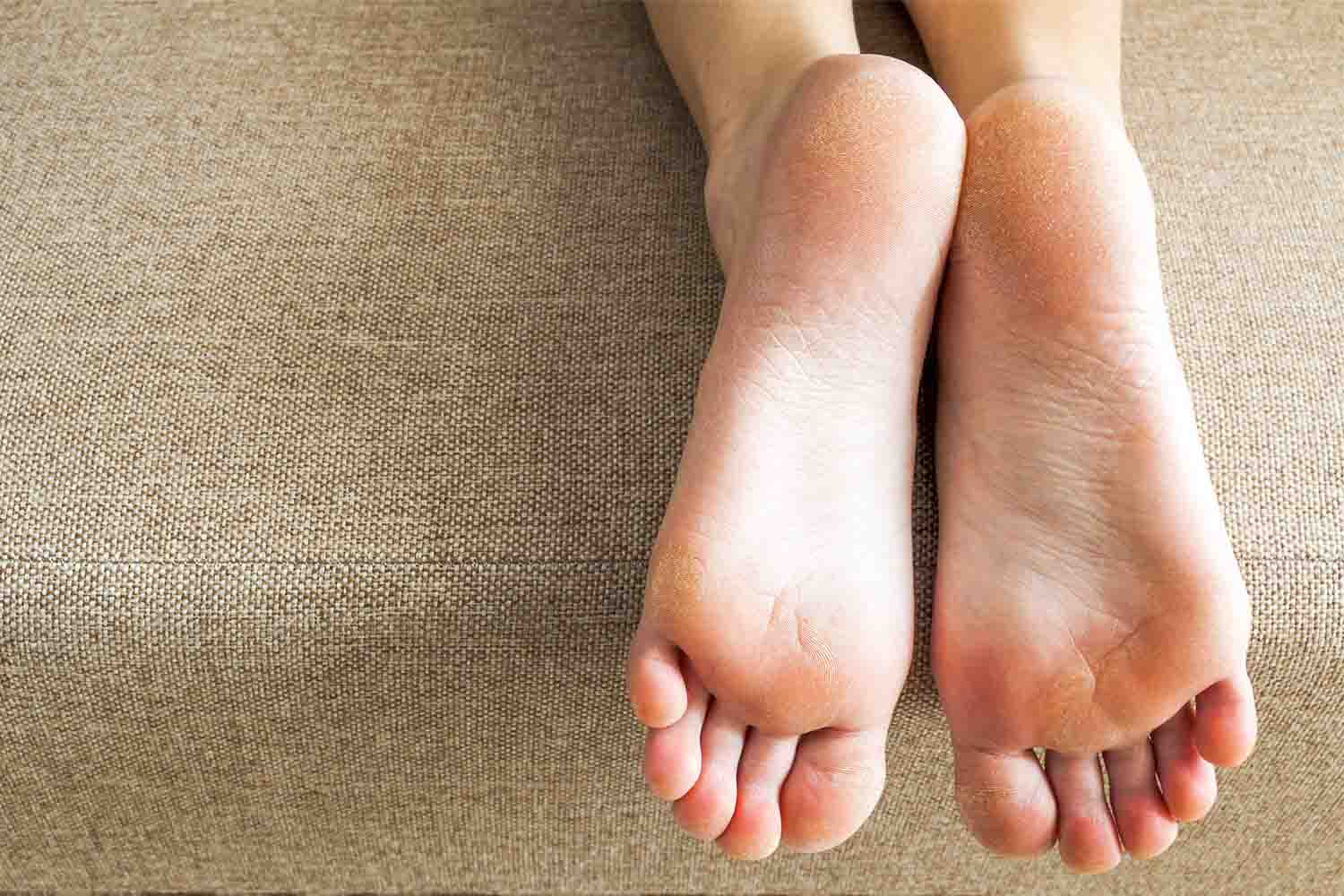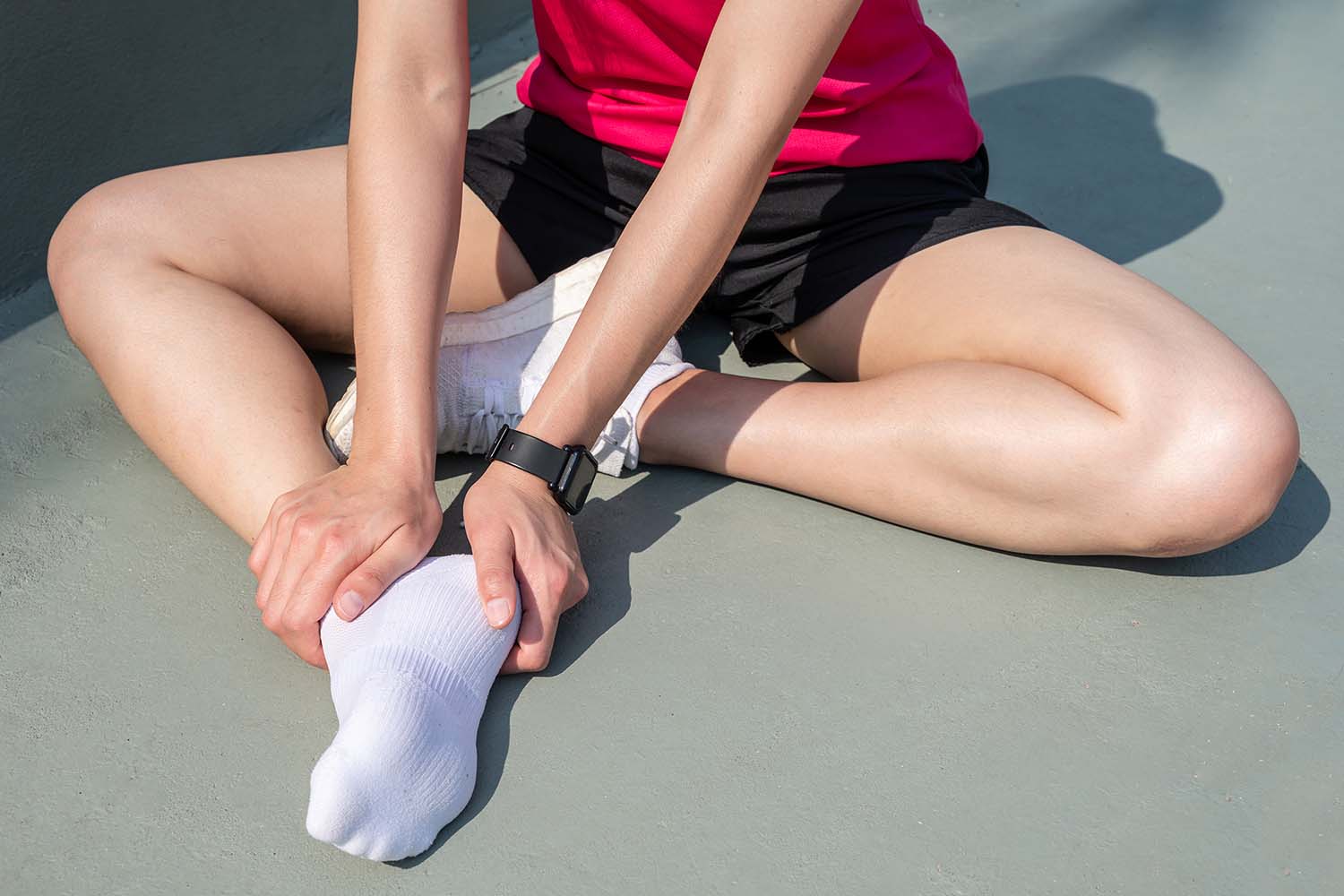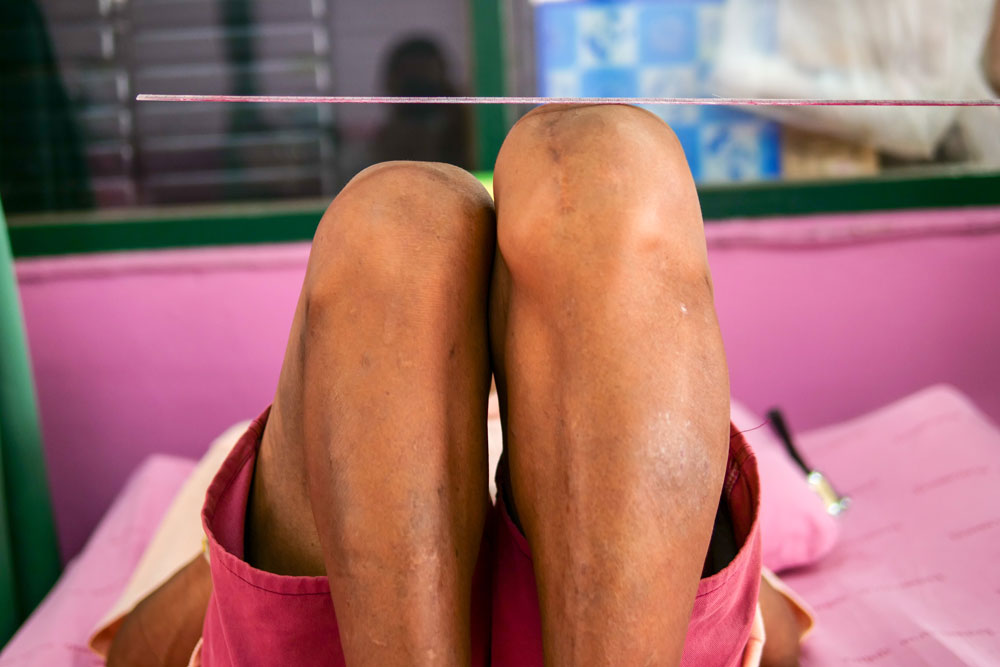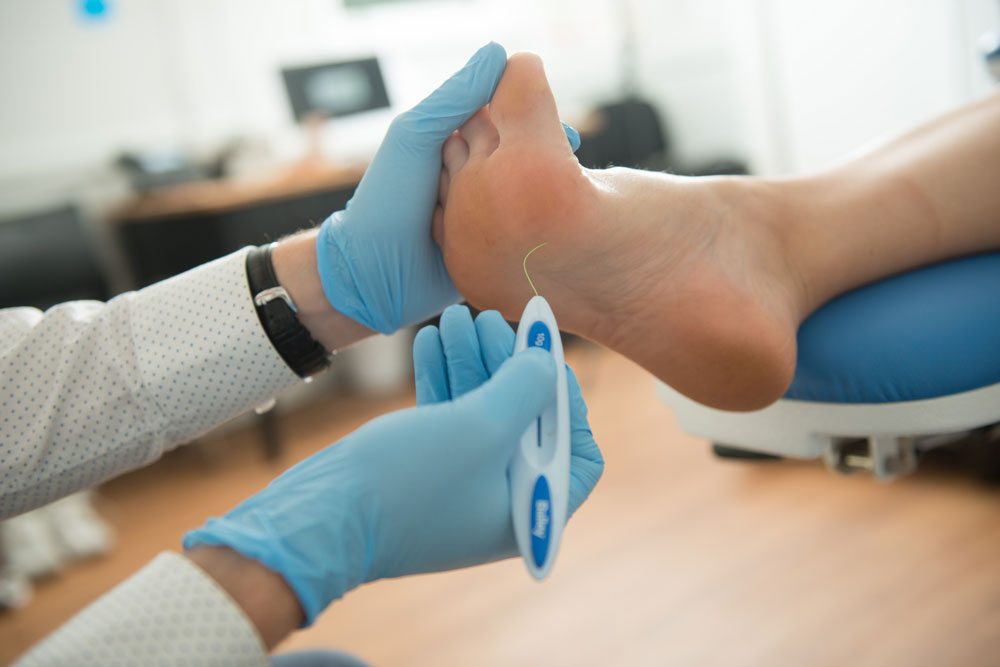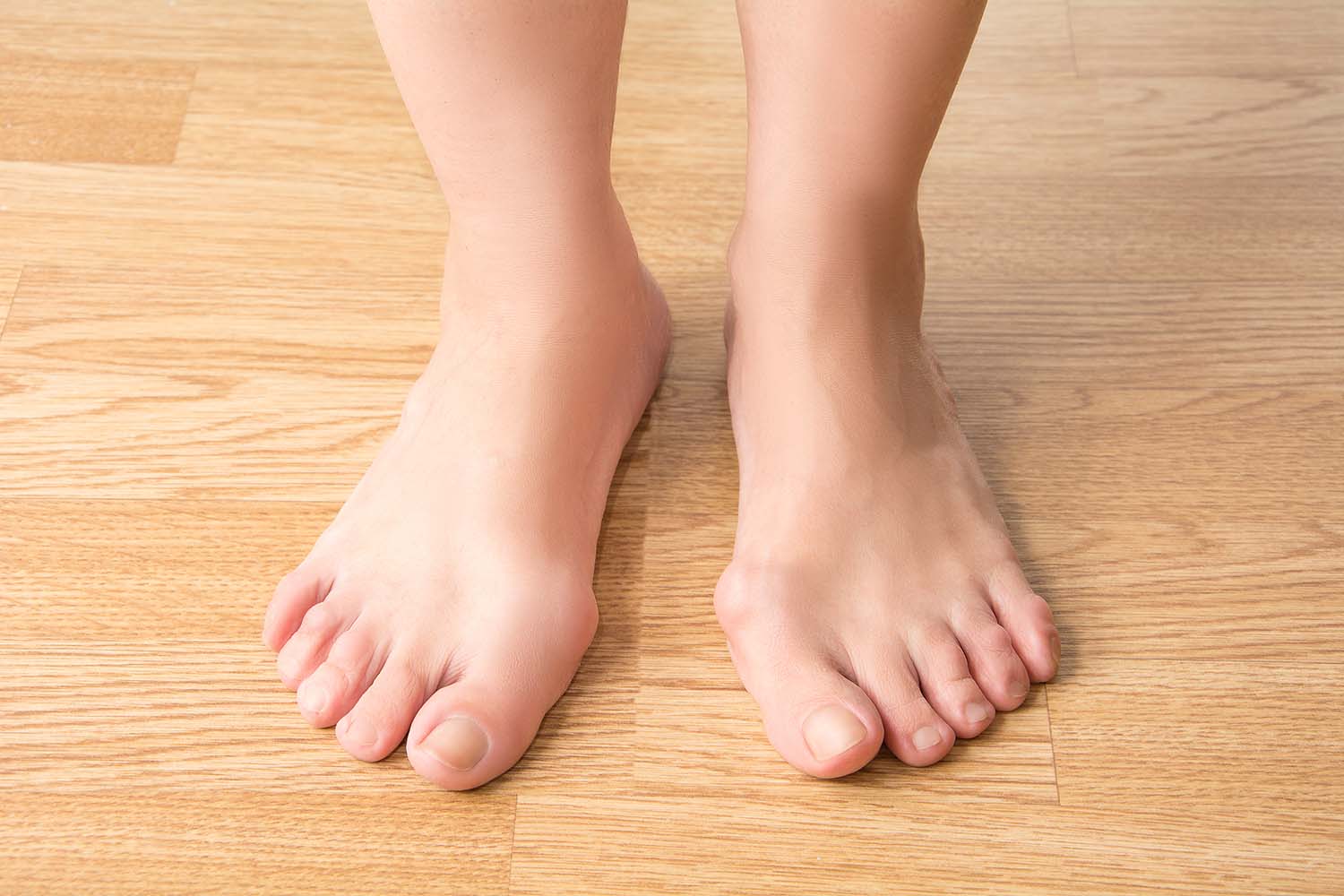Plantar Fasciitis
Many people experience plantar fasciitis globally and would commonly refer to the condition as heel pain. Pronounced (plan-tar fash-e-i-tis), this debilitating foot problem is regularly treated at our Northern Rivers Podiatry Clinic. Our expert podiatrists are highly skilled in their diagnosis and treatment of the condition.
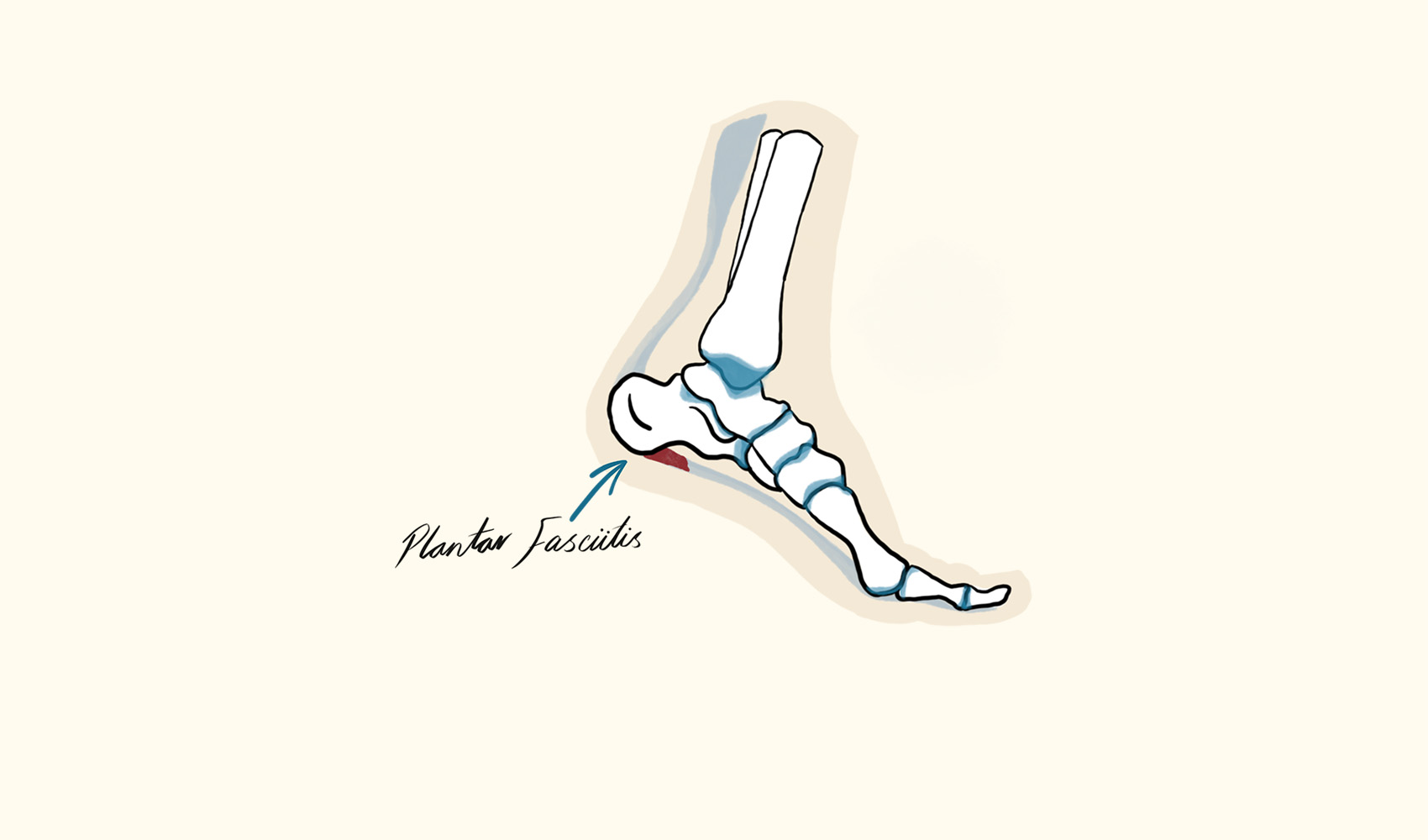
What is Plantar Fasciitis?
So, what actually is plantar fasciitis?
The plantar fascia is a thick band of tissue which runs across the bottom of each foot, joining the heel bone to the toes. This very strong ligament has the important job of supporting a person’s arches and absorbing the shock of walking and running. Plantar fasciitis is used to describe inflammation of the plantar fascia.
This heel pain and stiffness is often felt most strongly in the morning getting out of bed as the pressure is first applied to the feet. If left untreated it can make walking and standing for long periods extremely difficult.
Plantar Fasciitis symptoms
This condition is most often experienced by a stabbing pain at the bottom of the foot on the heel area closest to the arch. It’s worth noting that sometimes the pain can run along the entire length of the plantar fascia ligament or might feel like a sharp pain on the side of the heel or foot.
The physical discomfort is usually at its most intense with the very first steps taken in the morning. It can also be experienced after long periods of standing, walking upstairs, running or exercising. There may also be mild swelling in the heel.
Causes of Plantar Fasciitis
Some of the main causes of plantar fasciitis include overstretching, overuse or a medical condition. That said, often plantar fasciitis becomes present in a patient through:
Badly Fitting Footwear
Feet come in all different shapes and sizes. Your arch may be high and rigid or relaxed and rolled in. Feet may be narrow, wide, long or short. The shape and length of toes could be short and squarish or long and almost triangular. On top of this, often a person’s feet are not the same size and display unique features. It becomes easy to see that poorly fitted footwear compromising a person’s natural gait can lead to all sorts of ailments and plantar fascia injuries.
Weight Gain
Not all weight gain is alike. Sometimes it can be due to a sudden growth spurt in children, pregnancy, illness or unsupportive lifestyle choices. When rapid weight has been gained the excessive tension on the plantar fascia can contribute to heel pain intensifying over time.
Long Periods of Standing
Professions which require employees to stand for long periods such as sales assistants and teachers often place excessive strain on their plantar fascia tendons. This can be further exacerbated if the job requires lifting of heavy items, placing more pressure on the ligaments.
Posture and Gait Issues
Injuries to the body which change a person’s posture and gait (walking) can have flow on imparts on the feet. Changes can include the feet rolling excessively inwards (pronation) or outwards (supination) with each step. However, it’s worth mentioning that the normal aging process can contribute to a reduction in the planta fascia’s elasticity when walking. Our clinic has incredible technology in place to assess gait. We use comprehensive video gait analysis software, in shoe digital sensor tracking technology and 3D foot mapping scanners to get succinct, detailed data and reports which put us on the front foot of understanding and treating how you move and load through each foot.
Intense and Excessive Exercise
High impact sports place excessive pressure on a person’s arches. Therefore, it makes sense that extreme sports regimes like running, jumping, basketball and netball can lead to injury of the plantar fascia.
Plantar Fasciitis home treatment and prevention
Plantar fasciitis can be treated and fully healed. With this in mind, it is important to understand that even if fully repaired, plantar fasciitis can reappear if proper preventative measures are not taken. So here are some key tips to support plantar fasciitis treatment and prevention at home.
Wear Professionally Fitted Shoes
No two pairs of shoes are alike. They vary in width, depth, cushioning, support, structure, flexibility and weight. Taking the time to invest in supportive shoes for plantar fasciitis is imperative to protecting the plantar fascia tendon. It’s important to understand that even good quality shoes need to be replaced regularly. How much a person weighs, how often they are used and the terrain they are used on will all determine how long the cushioning and support will be at optimal performance. In addition, ensuring the shoe has a removable insert means that specialised orthotics can be added later without taking up too much room in the shoe. Add a specialised pair of socks for plantar fasciitis for additional support.
Icing the Heels and Resting the Feet
Use ice packs to minimise inflammation as soon as you notice any swelling, redness, pain or discomfort in the heel and arch area. This is often done in the evenings when dedicated time can be allocated to resting the feet.
Take Time to Stretch and Exercise
Stretch and warm up before starting any physical sport or activity. It is especially important to start new exercise regimes slowly and deliberately as suddenly overexerting the body can lead to unnecessary strain and tears. This includes allowing enough recovery time between training sessions. Stretching can also make the plantar fascia resistant to injury and more flexible. Learning proper stretching techniques can support to break up the scar tissue from previous micro-injuries and promote improved blood circulation. Taking the time to familiarise yourself with plantar fasciitis stretching and plantar fasciitis exercises can be incredibly beneficial.
Specialised Plantar Fasciitis treatment from your local Byron Bay Podiatrist
At our Byron Bay clinic our highly qualified podiatrists offer a wide range of proven treatments for plantar fasciitis. Treatments include but are not limited to:
- Expert advice on appropriate and supportive footwear
- Evidence based medicine – exercises and stretches to promote healing
- Physical therapies such as icing, remedial massage techniques
- Strapping, padding or gel heel cup products
- Compression and support socks
- Assessment, design and fitting of either prefabricated or customised foot orthotics utilising the best technology available in the world for foot orthotic manufacturing using 3D printed technology and 3D foot scanning technology.
- Recommending night splints fitted to the calf and foot while sleeping
- Referral for medical imaging (x-ray, ultrasound, MRI)
- Referral for Injection therapy (cortisone or platelet rich plasma)
- Referral and communication with your doctor
- Referral for surgery for severe and persistent cases.
Healing Plantar Fasciitis
With professional support, everyday care and appropriate footwear, plantar fasciitis (heel pain) can resolve fully within weeks.
Patients with pain in their feet experience quite speedy recovery times when they respond to the discomfort sooner and consult with a professional such as a Podiatrist to assist with diagnosis and management. Patients who delay seeking out professional advice and management can require more support and attention to resolve plantar fasciitis than those who action care sooner and risk developing chronic foot pain.
Heel pain can be a debilitating condition which makes it harder to enjoy the day. If you’re experiencing the symptoms akin to plantar fasciitis, come in to see one of our professional podiatrists and have a biomechanical assessment done. This appointment type will enable us to support you to get that spring in your step back, provide a diagnosis of your complaint and get you started on the path to better health.
Contact Us
"*" indicates required fields
